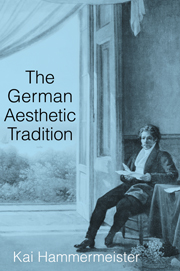9 - Heidegger, Gadamer
Published online by Cambridge University Press: 14 January 2010
Summary
Martin Heidegger
Martin Heidegger's (1889–1976) writings on art renew the romantic paradigm in the philosophy of art for the twentieth century. Despite all his criticism of the idealist tradition, Heidegger insists with Schelling on art as a Wahrheitsgeschehen, a truth-event, that is, an occasion when truth becomes conspicuous. Still, Heidegger differs from his romantic precursor in that he does not elevate art to that height where it becomes the only access to truth. Rather, he allows for some few alternative events in which truth reveals itself as well. Nevertheless, Heidegger agrees with Schelling insofar as both thinkers place art as an “organon of truth” above the propositional correctness of science and, hence, some versions of philosophy.
Heidegger begins to write about art in the 1930s. He deals with this subject in his lectures on Hölderlin and Nietzsche of the 1930s and 1940s; in 1935 he gives the lecture “Der Ursprung des Kunstwerks” (The origin of the work of art) in Freiburg and repeats it the following year in Zurich and Frankfurt am Main. Although this text was the most probing and systematic of his pronouncements on art, it was not published until 1950 when it appeared as the opening essay of the book Holzwege (Paths in the wood). In 1951 the essay “Bauen Wohnen Denken” (Building dwelling thinking) followed, in 1969 “Die Kunst und der Raum” (Art and space).
- Type
- Chapter
- Information
- The German Aesthetic Tradition , pp. 173 - 193Publisher: Cambridge University PressPrint publication year: 2002



